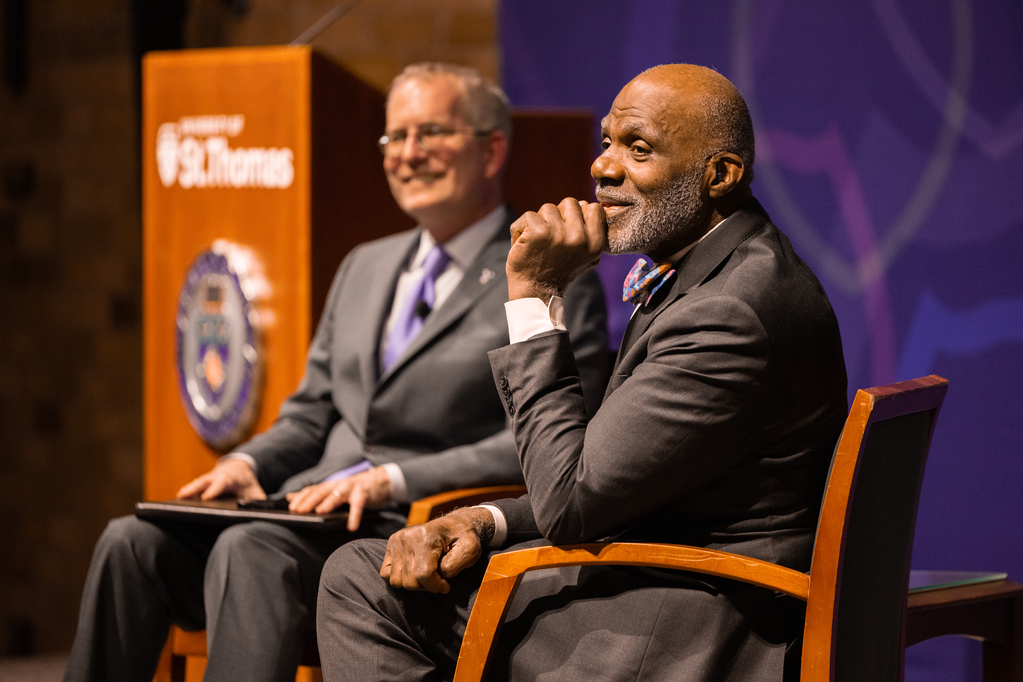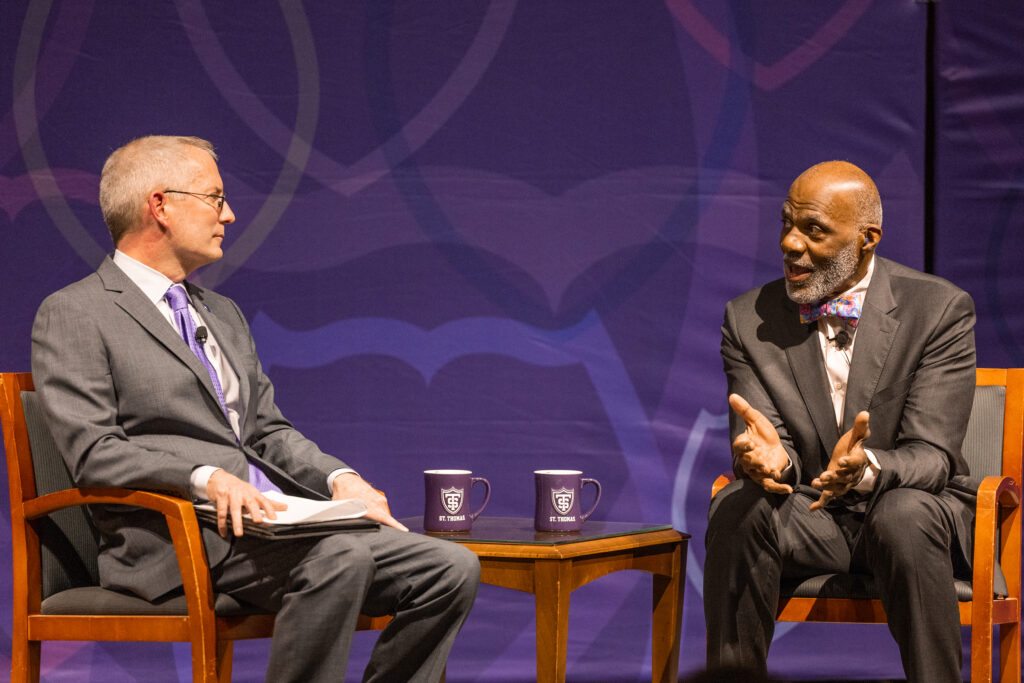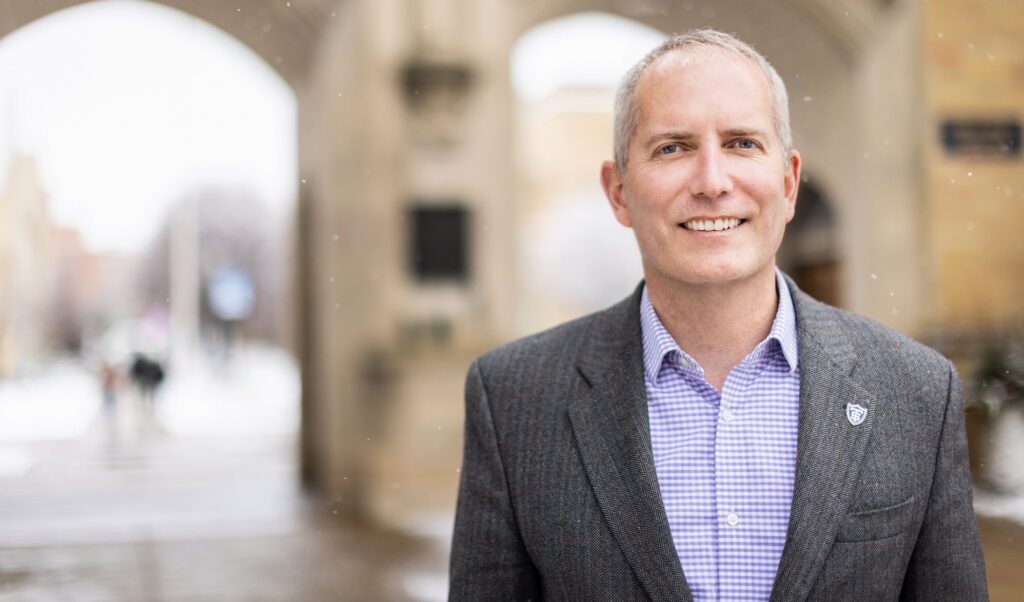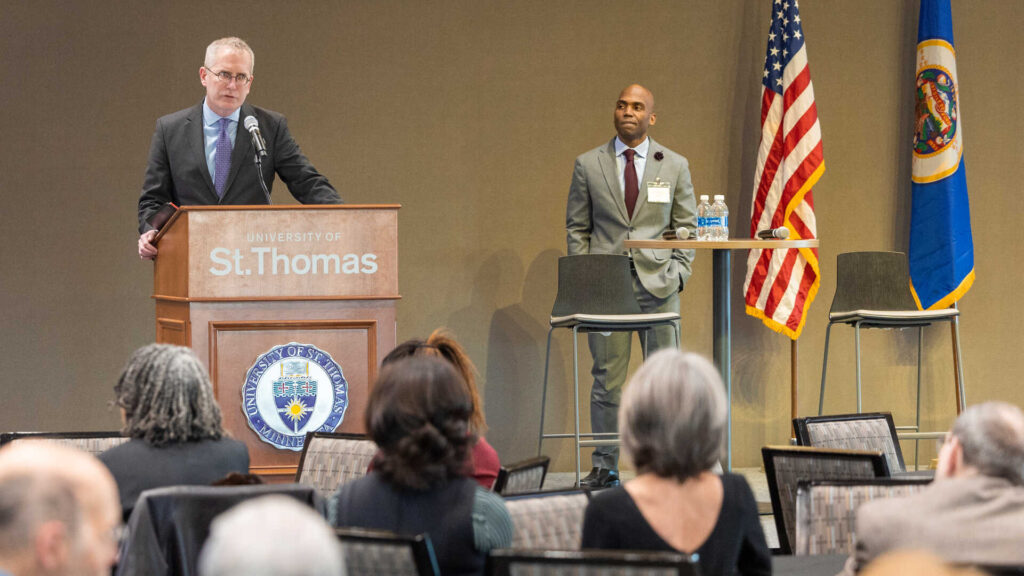The Strategic Planning Oversight Committee has assembled eight task forces that will facilitate the implementation of the university’s various strategic initiatives. The task forces have begun to set up timelines and establish specific goals for the next 15 months, but will continue to seek the participation of the entire university community to make the initiatives reality.
The Strategic Planning website has been updated to include pages for each task force that have the names of task force chairs, members, brief descriptions of their charges and a feedback form for St. Thomas community members to provide thoughts and ideas. Some task forces already have posted timelines, and they all will use the site to track public meetings.
The task forces are made up of faculty and staff either through election or appointment as determined by the SPOC, the faculty affairs committee and the executive committee of the faculty. The SPOC will work with Student Affairs in the fall to form a student advisory committee to obtain student input as appropriate.
To invite a task force to meet with your unit, contact one of the task force's co-chairs. Contact information is available on the website. Each task force will set up its own calendar of meetings, open sessions and other opportunities for feedback and communication.
Please do not hesitate to contact SPOC co-chairs Provost Richard Plumb or Dr. Corrine Carvalho with questions or concerns.
History
The SPOC was formed in February 2015. It is made up of the 16 co-chairs of the eight task forces that will oversee the implementation of the university’s eight strategic priorities.
SPOC’s work began immediately following the arrivals of its newest members, Father Larry Snyder, vice president for mission, and Dr. Calvin Hill, university officer for diversity and inclusion.
In February and March, the co-chairs wrote charges and proposed the membership structure for their task forces. SPOC reviewed all of these charges and memberships before calls were sent out.
The structure of each task force varies depending on the work of that committee. Co-chairs worked with the executive committee, the faculty senate, and the committee on faculty nominations and elections in cases where duly elected faculty were needed. This was especially important for the “Educating for the Future” and “Integrated Health and Wellness Programs” task forces.
Staff also play a large role in most of the remaining task forces. Two task forces, “Enhanced Visibility and Student Profile” and “Integrated Planning,” are comprised primarily of staff and a handful of faculty chosen for expertise or position on elected committees. The task force on “Catholic-Inspired Community Engagement” has members from the two staff councils. In total, slightly more staff are on the task forces than faculty.
The current task force memberships are based on anticipated tasks over the first two years. It is expected that the makeup of the eight task forces will change over time as implementation proceeds and work progresses.






